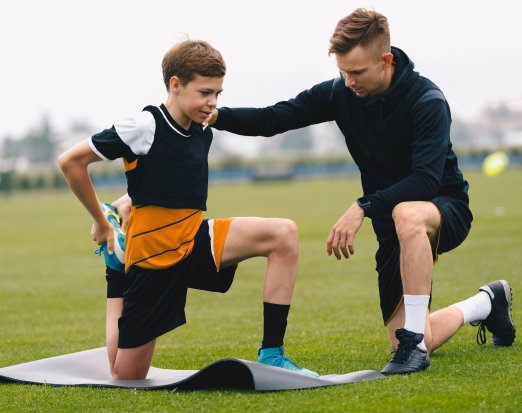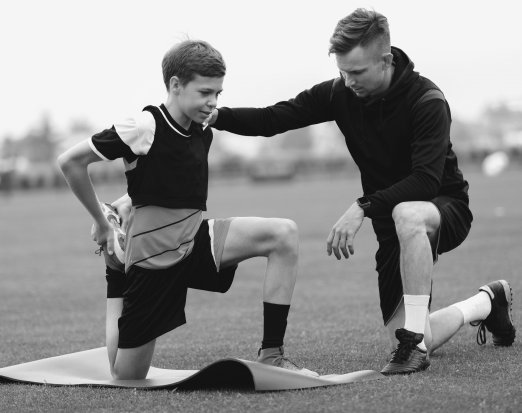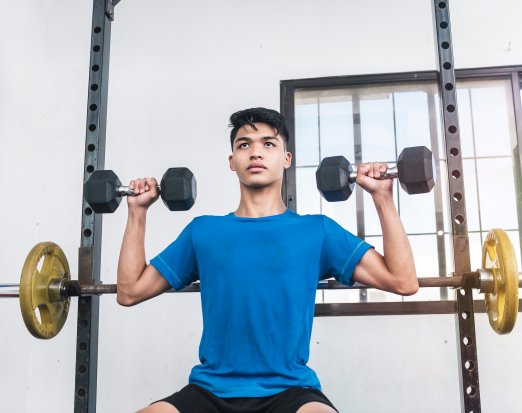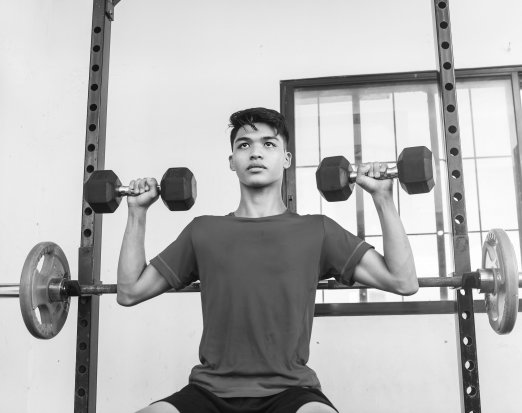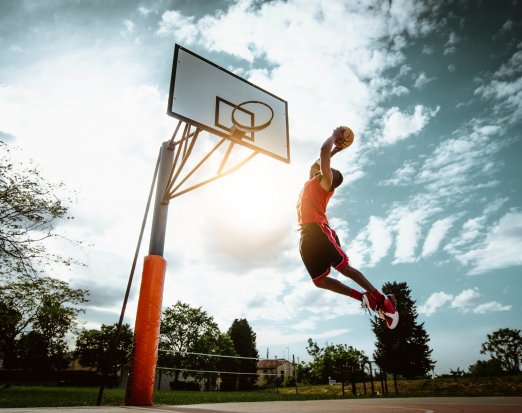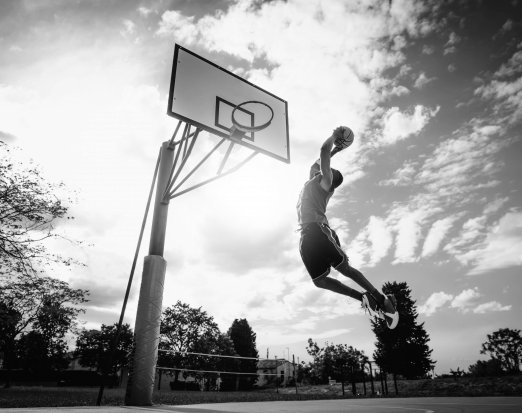Higher Frequency of Injuries in Youth Sport
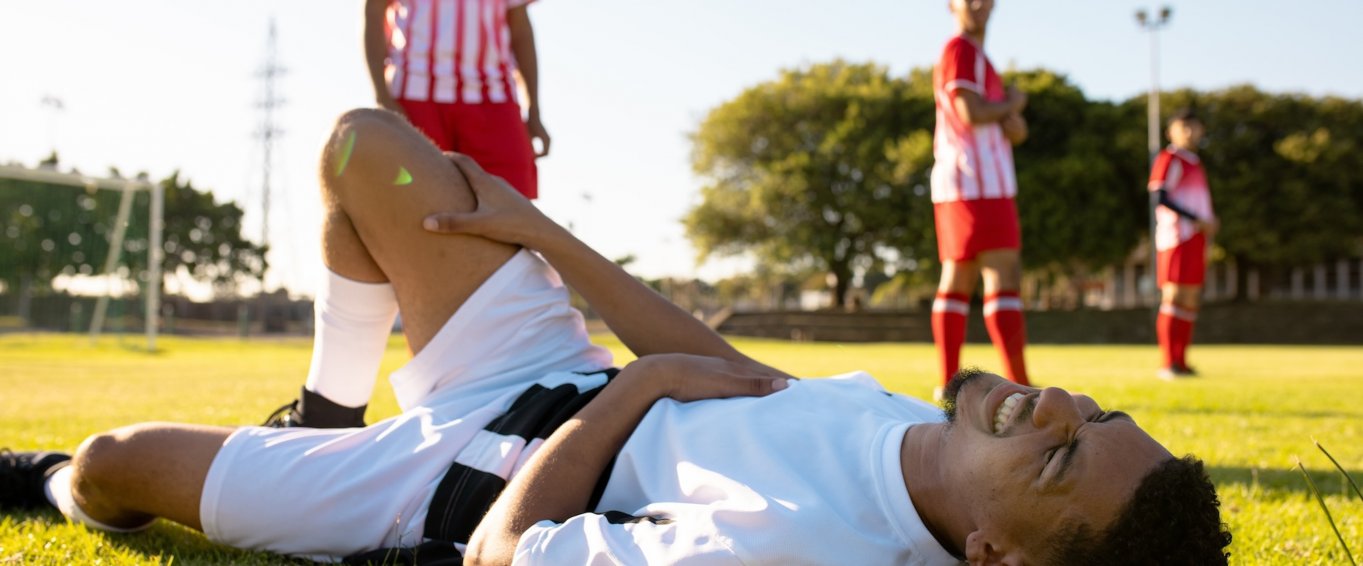
The increase in youth-sport related injuries, as highlighted by Merkel's Review (14), is indeed a cause for concern. Several factors may contribute to the higher frequency of these injuries, including poor preparedness or lack of readiness(15), early specialisation or sport specialisation, (12) and the multifactorial nature of musculoskeletal injuries.
Athletic preparedness, also known as being Sport Ready, refers to optimal physical conditioning and readiness to engage and play a wide range of sports. A general lack of strength and conditioning, along with inadequate rest and recovery periods can contribute to increasing the risk of injuries in youth athletes.
Early specialisation or sport specialisation, where young athletes focus on participating in only one sport throughout the year, has become increasingly common (8). While it may seem logical to emphasise specific skill development through intensive practice, this approach has been associated with a higher incidence of overuse injuries. Studies have shown that young athletes who participate in multiple sports experience fewer injuries compared to those who specialise in one sport. Therefore, encouraging young athletes to engage in a variety of sports and activities can help reduce the risk of overuse injuries (1).
It's important for coaches to consider these factors and take appropriate measures to mitigate the risk of youth-sport related injuries. Coaches should promote a well-rounded training program that includes strength, balance, and agility exercises (6). They should monitor athletes for signs of overuse or fatigue and adjust training accordingly. Additionally, coaches should emphasise the learning of technique in a positive and supportive environment that prioritises long-term development over intense sport competition.
Parents also play a crucial role in reducing the risk of youth-sport injuries. They should support and encourage their children to participate in a variety of sports and activities rather than focusing solely on one sport (14). Parents should communicate with coaches about any concerns regarding overuse injuries and ensure their children have enough rest and recovery time between practices and games.
By addressing these key factors and promoting a holistic approach to youth sports, we can work towards reducing the frequency of youth-sport related injuries. This will help create a safer and more sustainable sports environment for young athletes, allowing them to experience the numerous physical, social, and psychological benefits associated with sports participation (2, 9).
Overuse Injuries
Overuse injuries occur due to repetitive stress on bones, joint cartilage, muscles, tendons, and musculotendinous junctions (3). When the tissues are not given sufficient time to rest and recover, they can develop pain and discomfort, leading to overuse injuries. It is alarming that approximately 50% of youth sport-related injuries are associated with overuse injuries (5).
The growth and development of young athletes can contribute to their vulnerability to overuse injuries, particularly during or after their peak height velocity (4). This period is characterised by rapid changes in long-bone growth compared to muscle and tendons, which can disrupt the length-tension relationships within the body and make joint structures more susceptible to overuse injuries (10).
Examples of common overuse injuries reported in research include Patellofemoral Pain (PFP), which is characterised by pain around the kneecap. PFP is highly prevalent among young athletes, with around 30% reporting this condition (13). Female athletes who specialise in one sport have a higher risk of developing PFP compared to those who participate in multiple sports (7).
Two other overuse injuries associated with growth and development are Osgood Schlatter disease and Severs Disease. Osgood Schlatter disease affects the knee, leading to pain, swelling, and tenderness. Severs Disease affects the heel. The average age of onset for Osgood Schlatter disease is reported to be 12.7 years old for boys and 11.5 years old for girls, while for Severs Disease, it is 10 years old for boys and 9.4 years old for girls. These findings suggest that overuse injuries are often linked to peak height velocity ages (11). Therefore, it is important to consider the frequency of youth sports participation and practice sessions to potentially reduce the occurrence of overuse injuries.
To address and reduce the risk of overuse injuries, it is essential to implement strategies such as adequate rest and recovery periods, learning of training techniques, and monitoring the workload of young athletes. Coaches and parents should collaborate to ensure that young athletes have appropriate training plans that include rest days, opportunity to try different sports, and strength and conditioning exercises to support their overall development and reduce the risk of overuse injuries.
Sport Specialisation
Sport specialisation refers to young athletes focusing on participating in a single sport throughout the year (8), often with the belief that more practice in that specific sport will lead to better performance. However, studies have shown that around 50% of all youth-sport injuries are linked to overuse, which is associated with sport specialisation (1).
It is crucial to consider the concept of sport specialisation and its potential drawbacks. Research indicates that young athletes who engage in multiple sports experience fewer injuries compared to those who specialise in one sport, particularly before puberty. Participating in multiple sports allows for a more diverse range of movements, skills, and physical demands.
For young children, sports participation should primarily focus on skill development, fun, and social development. A multi-skilled activity program can foster motor skills development and enjoyment. The emphasis should be on creating a positive and supportive environment that encourages overall skill acquisition and social interactions.
On the other hand, young athletes can benefit from participating in a strength and conditioning program in addition to engaging in multiple sports. This approach helps to vary their training and development, leading to more well-rounded and resilient athletes. Incorporating neuromuscular training, which includes strategies to develop strength, balance, and agility, has been shown to effectively reduce injuries in youth sports.
It is important for coaches, parents, and sports organisations to promote a balanced approach to youth sports. Encouraging young athletes to participate in multiple sports, focusing on skill development, and incorporating strength and conditioning programs can contribute to their overall athletic development. By prioritising the long-term well-being and development of young athletes, we can create a healthier and more sustainable sports culture.
Reducing the Risks
As growth and sport specialisation (playing only one sport throughout the year) are constant risk factors to developing an overuse injury, we need to consider that all parties; the athlete, coach and parents have a role in reducing youth-sport injuries. From the review by Merkel (2013), the researcher did a great job of identifying the different responsibilities for each party (table 1).
Table 1. Injury Reduction Strategies. Merkel (2013).
Athlete |
Parent |
Coach |
| Sport readiness | Appropriate fit and use of equipment | Preseason condition/activity |
| Aerobic and anaerobic fitness | Appropriate fit and use of footwear | Appropriate training frequency, intensity, and duration |
| Strength training | Enforcement of safety rules | Limiting increases in training volume to 10% weekly |
| Flexibility | Adjustment for environmental conditions | Insuring proper form technique or form |
| Proper rest | Education of coaches | Implementation of appropriate strength and conditioning programmes |
| Proper hydration | Incorporation of warmup and cool-down phases for practice and competition | |
| Proper nutrition |
Exercises like Lunges and Step Downs to train a range of neuromuscular strategies
Track and monitor recovery and readiness
Monitoring recovery, freshness and overall readiness in youth athletes should be an ongoing part of the athletic development, not just from a performance related aspect, but from a health, wellbeing, and injury reduction focus. Again, Merkel (2013) identified that proper rest, nutrition, and hydration are vital and are in the mix with injury reduction, however, I would change the word proper to optimal, with the athlete learning what is optimal for them.
As technology can easily help to track recovery via questionnaires, empowering the athlete to rate their level of tiredness, fatigue, muscle soreness, sleep pattern and energy levels, this reflective practice can help the athletes to learn recovery strategies, furthermore, coaches can give guidance on a training phase relative to their athletes' recovery status/readiness and generally promote the importance and power of lifestyle. Watch out for our blog on monitoring loads in youth athletes.
Summary
Encouraging young children to engage in regular free play and experience a variety of sports is crucial for their overall motor skill and social development. Free play allows children to explore different movements, develop coordination, and learn important social skills such as teamwork and communication.
As children grow and become capable of following instructions, it is beneficial to introduce regular strength and conditioning sessions. These sessions can help develop their general physical capacities, including strength, balance, and coordination. By focusing on these fundamental skills, young athletes can build a solid foundation for their athletic abilities.
Additionally, it is important to track and monitor the recovery and well-being of young athletes, especially during periods of rapid maturation. Monitoring their physical and mental well-being can help identify potential issues or imbalances and enable appropriate interventions or adjustments to training programs.
Educating young athletes about important aspects of their overall well-being, such as sleep, nutrition, training, and general physical activity for recovery, is also crucial. By providing them with knowledge and guidance in these areas, athletes can learn how to take care of their bodies and support their athletic performance.
Ultimately, the role of coaches, PE teachers, and sports coaches goes beyond simply training young athletes for specific sports. It is about preparing them for a lifelong journey of being active and engaged in sports and physical activities. By focusing on holistic development, including physical, mental, and social aspects, we can help young athletes thrive both on and off the field.
Youth Strength & Conditioning Platform for Schools, Sport Clubs, and Academies.
Our platform helps to deliver effective training and tracks athletic progress and development, with the core objectives of reducing the risk of injuries and to promote both sport readiness and performance. The platform’s features include -
- Strength and conditioning tests and dashboard to monitor and compare athlete metrics
- Athlete app - athletes can discover new exercises and train independently
- Track data - monitor athlete’s training loads, RPE, and training adherence
- Reports - simply create squad, team, and individual athlete reports
- Full curriculum - follow a strength and conditioning curriculum with a library of session plans
References
- American Academy of Pediatrics. (2000). Committee sports medicine and fitness. Intensive training and sports specialisation in young athletes. Pediatrics, 106, 154 – 157.
- Baranowski, T., Bouchard, C., Bar-or, O., Bricker, T., Heath, G., Kimm, S.Y.S, Malina, R., Obarzanek, E., Pate, R., Strong, W.B., Truman, B., & Washington, R. (1992). Assessment, prevalence and cardiovascular benefits of physical activity and fitness in youth. Medicine and Science in Sports and Exercise, 24(6), 237 – 247.
- Brenner, J.S. (2007). Overuse injuries, overtraining and burnout in child and adolescent athletes. American Academy of Pediatrics, 119(6), 1242 – 1245.
- Bult, H.J., Barendrecht, M., & Ramon, I.J. (2018). Injury risk and injury burden are related to age group and peak height velocity among talented male youth soccer players. The Orthopaedic Journal of Sports Medicine, 6(12), 1 – 10.
- Dalton, S.E. (1992). Overuse injuries in adolescent athletes. Sports Medicine, 13, 58 – 70.
- Emergy, C.A., Roy, T.O., Whittaker, J.L., Nettel-Aguirre, & Van Mechelen, W. (2015). Neuromuscular training injury prevention strategies in youth sport: a systemic review and meta-analysis. Br J Sports Med, 0, 1- 7.
- Hall, R., Foss, K.B., Hewett, T.E., & Myer, G.D. (2015). Sports specialisation is associated with an increased risk of developing anterior knee pain in adolescent female athletes. Journal of Sports Rehabilitation, 24(1), 31 – 25.
- Hecimovich, M. (2004). Sport specialisation in youth: A literature Review. JACA, 41(4), 32 – 41.
- Howie, E.K., Guagiano, J.M., Milton, K., Vella, S.A., Gomersall, S.R., Kolbe-Alexander, T.L., Richards, J., & Pate, R.R. (2020). Ten research priorities related to youth sport, physical activity, and health. Journal of Physical Activity and Health, 17(9), 920 – 929.
- Krizz, P. (2011). Overuse injuries in the young athlete. Medicine and Health, 94(7), 203 – 208.
- Lau, L.L., Mahadev, A., & Hui, J.H.P. (2008). Common lower limb sports related overuse injuries in young athletes. Ann Acad Med Singapore, 37, 315 – 319.
- McClelland, J.J. (2016). Early sport specialisation. Overuse injury and burnout. Otterbein University, Health, and Sport Sciences, 7, 1 – 42.
- McNerney, M.G., & Arendt, E. (2013). Anterior knee pain in the active and athletic adolescent. Current Sports Medicine Reports, 12(6), 404 – 410.
- Merkel, D.L. (2013). Youth Sport: positive and negative impact on young athletes. Open Access Journal of Sports Medicine, 4, 151 – 160.
- Purcell, L.K. (2005). Sport readiness in children and youth. Paediat Child Health, 10, 343 – 344.
